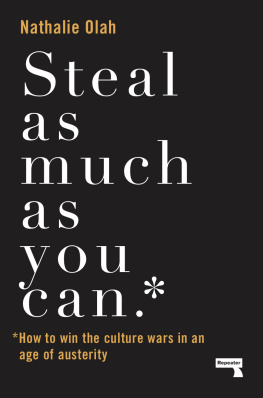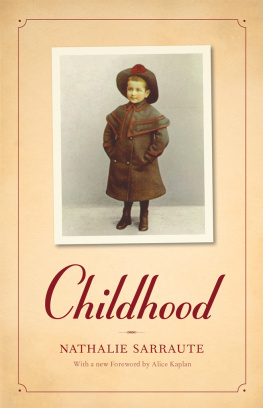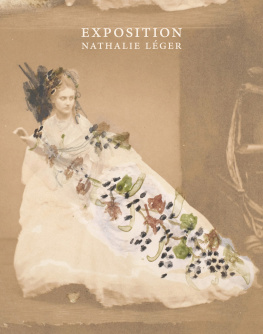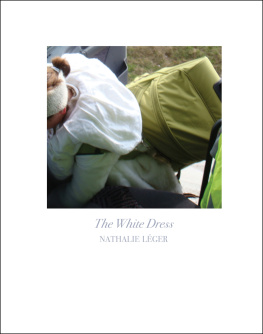Nathalie Sarraute - Tropisms
Here you can read online Nathalie Sarraute - Tropisms full text of the book (entire story) in english for free. Download pdf and epub, get meaning, cover and reviews about this ebook. year: 1967, publisher: George Braziller, genre: Detective and thriller. Description of the work, (preface) as well as reviews are available. Best literature library LitArk.com created for fans of good reading and offers a wide selection of genres:
Romance novel
Science fiction
Adventure
Detective
Science
History
Home and family
Prose
Art
Politics
Computer
Non-fiction
Religion
Business
Children
Humor
Choose a favorite category and find really read worthwhile books. Enjoy immersion in the world of imagination, feel the emotions of the characters or learn something new for yourself, make an fascinating discovery.

- Book:Tropisms
- Author:
- Publisher:George Braziller
- Genre:
- Year:1967
- Rating:5 / 5
- Favourites:Add to favourites
- Your mark:
- 100
- 1
- 2
- 3
- 4
- 5
Tropisms: summary, description and annotation
We offer to read an annotation, description, summary or preface (depends on what the author of the book "Tropisms" wrote himself). If you haven't found the necessary information about the book — write in the comments, we will try to find it.
Tropisms — read online for free the complete book (whole text) full work
Below is the text of the book, divided by pages. System saving the place of the last page read, allows you to conveniently read the book "Tropisms" online for free, without having to search again every time where you left off. Put a bookmark, and you can go to the page where you finished reading at any time.
Font size:
Interval:
Bookmark:
TROPISMS
BY
NATHALIE SARRAUTE
Translated from the French by Maria Jolas
This translation, John Calder (Publishers) Ltd. 1965 All Rights Reserved
Tropismes first published in France by Denoel in 1939 and re-published by Editions de Minuit in 1957.
FOREWORD
T HE PUBLICATION in one volume of a work like Tropisms which some considered to be a collection of prose poemswith what, quite obviously, is furthest removed from it: a series of essays on the novel, may cause legitimate surprise.
And yet this proximity is justifiable.
The great interest shown today in discussions of the novel, and especially in the theories advanced by the supporters of what, in France at present, is called the 'Nouveau Roman', has led many to imagine that these theorising novelists are cool calculators who began by constructing their theories, which they then decided to put into practice in their books. This explains the fact that their novels have been referred to as 'laboratory experiments'.
If this were the case, it might seem plausible that, one fine day, after having formulated certain opinions on the evolution, content and form of the present-day novel, I sat down at my table and undertook to apply them by writing Tropisms, and the books that followed.
Nothing could be more mistaken than this supposition. For no literary work can be a mere illustration of principles, however convincing. And, in fact, these articles, all of which were written since 1947, are far removed from the conception and composition of my first book.
I started to write in 1932, when I composed my first Tropism. At that time, I had no preconceived ideas on the subject of literature and this one, as were those that followed it, was written under the impact of an emotion, of a very vivid impression. What I tried to do was to show certain inner 'movements' by which I had long been attracted; in fact, I might even say that, ever since I was a child, these movements, which are hidden under the commonplace, harmless appearances of every instant of our lives, had struck and held my attention. In this domain, my first impressions go back very far.
These movements, of which we are hardly cognizant, slip through us on the frontiers of consciousness in the form of undefinable, extremely rapid sensations. They hide behind our gestures, beneath the words we speak and the feelings we manifest, all of which we are aware of experiencing, and are able to define. They seemed, and still seem to me to constitute the secret source of our existence, in what might be called its nascent state.
And since, while we are performing them, no words express them, not even those of the interior monologuefor they develop and pass through us very rapidly in the form of frequently very sharp, brief sensations, without our perceiving clearly what they areit was not possible to communicate them to the reader otherwise than by means of equivalent images that would make him experience analogous sensations. It was also necessary to make them break up and spread out in the consciousness of the reader the way a slow-motion film does. Time was no longer the time of real life, but of a hugely amplified present.
These movements seemed to me to be veritable dramatic actions, hiding beneath the most commonplace conversations, the most everyday gestures, and constantly emerging up to the surface of the appearances that both conceal and reveal them.
The dramatic situations constituted by these invisible actions interested me as such. Nothing could distract my attention from them and nothing should distract that of the reader; neither the personality of the characters, nor the plot, by means of which, ordinarily, the characters evolve. The barely visible, anonymous character was to serve as a mere prop for these movements, which are inherent in everybody and can take place in anybody, at any moment.
Thus my first book is made up of a series of moments, in which, like some precise dramatic action shown in slow motion, these movements, which I called Tropisms, come into play. I gave them this name because of their spontaneous, irresistible, instinctive nature, similar to that of the movements made by certain living organisms under the influence of outside stimuli, such as light.
This analogy, however, is limited to the instinctive, irresistible nature of the movements, which are produced in us by the presence of others, or by objects from the outside world. It obviously never occurred to me to compare human beings with insects or plants, as I have sometimes been reproached with doing.
The volume entitled Tropisms appeared in 1939, under the imprimatur of Denol. The present edition, source of this translation, was published by the Editionsde Minuit, in 1957. It is a corrected re-edition of the 1939 volume, to which have been added the six last texts, written between 1939 and 1941,
This first book contains in nuce all the raw material that I have continued to develop in my later works.
Tropisms are still the living substance of all my books, the only difference being that they now play a more important role, the time of the dramatic action they constitute is longer, and there is added complexity in the constant play that takes place between them and the appearances and commonplaces with which they emerge into the open: our conversations, the personality we seem to have, the person we seem to be in one another's eyes, the stereotyped things we believe we feel, as also those we discover in others, and the superficial dramatic action constituted by plot, which is nothing but a conventional code that we apply to life.
My first books: Tropismes, which appeared in 1939, and Portraitd'un inconnu in 1948, passed practically unnoticed in the post-war literary atmosphere, which was dominated by the Behaviourist tendency and by a metaphysics of the 'absurd.'
As a result, if for no other reason than to seek justification, reassurance or encouragement for myself, I began to reflect upon the motives that impelled me to reject certain things, to adopt certain techniques, to examine certain works of both past and present, and to anticipate those of the future, in an effort to discover an irreversible direction in literature that would permit me to see if my own quest was in line with this direction.
Thus it was that, in 1947, I was prompted to study the works of Dostoevski and Kafka from a particular angle. In the article entitled L'Ere du soupon, which appeared in 1950, I tried to show the results of the transformations of characters in fiction since Balzac's time, as exemplified in the contemporary novel. And in Conversationetsous-conversation, published in 1955, I called attention to the out-moded nature of dialogue as practised in the traditional novel.
In connection with this latter article, I should like to stress the fact that when I spoke of the old-fashioned nature of the works of Joyce and Proust, or the navet of Virginia Woolf's ideas on the subject of the novel, it was quite obviously to poke fun at those who had expressed themselves in this manner about these writers. Taken as a whole, it seems to me that this article is perfectly clear; I insist on this point, however, because it has been a source of occasional misunderstanding.
Lastly, in the article entitled Cequevoient les oiseaux, which appeared in 1956, I tried to show, among other things, the academic, formalist features of a certain type of 'realism'.
Some of the ideas expressed in these articles have contributed to the essential bases for what, today, is called the 'Nouveau Roman.'
And so, it seems to me that the present volume, to which two such dissimilar works as Tropisms and The Age of Suspicion
Next pageFont size:
Interval:
Bookmark:
Similar books «Tropisms»
Look at similar books to Tropisms. We have selected literature similar in name and meaning in the hope of providing readers with more options to find new, interesting, not yet read works.
Discussion, reviews of the book Tropisms and just readers' own opinions. Leave your comments, write what you think about the work, its meaning or the main characters. Specify what exactly you liked and what you didn't like, and why you think so.







![Nathalie Nahai [Nathalie Nahai] - Webs of Influence: The Psychology of Online Persuasion, 2nd Edition](/uploads/posts/book/124053/thumbs/nathalie-nahai-nathalie-nahai-webs-of.jpg)

